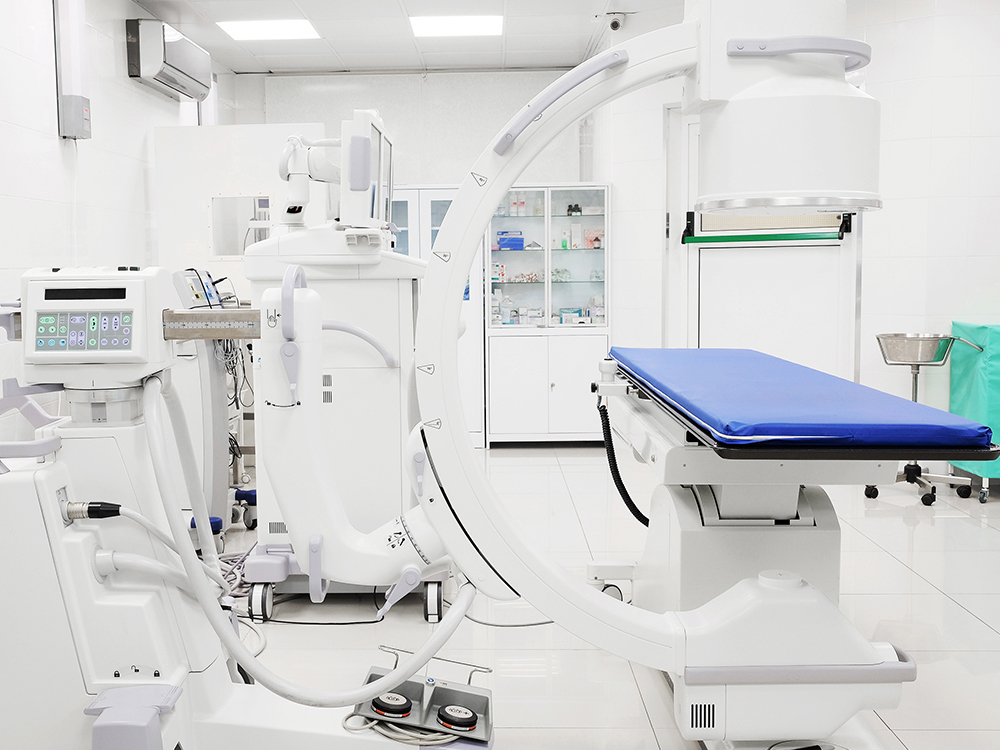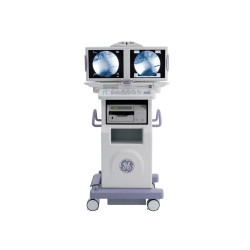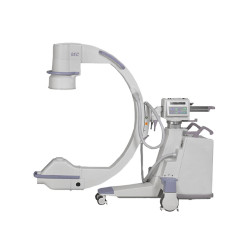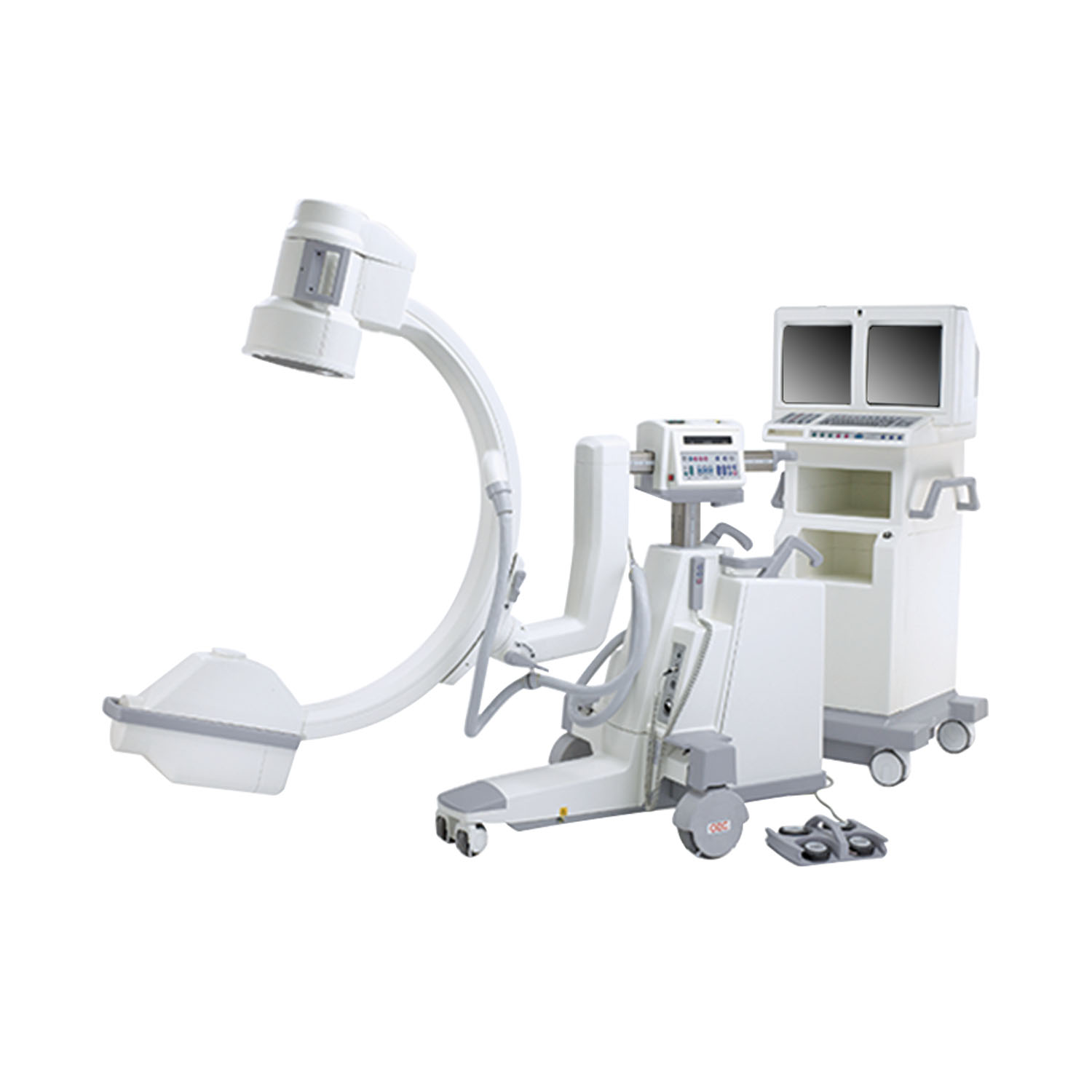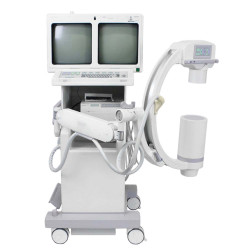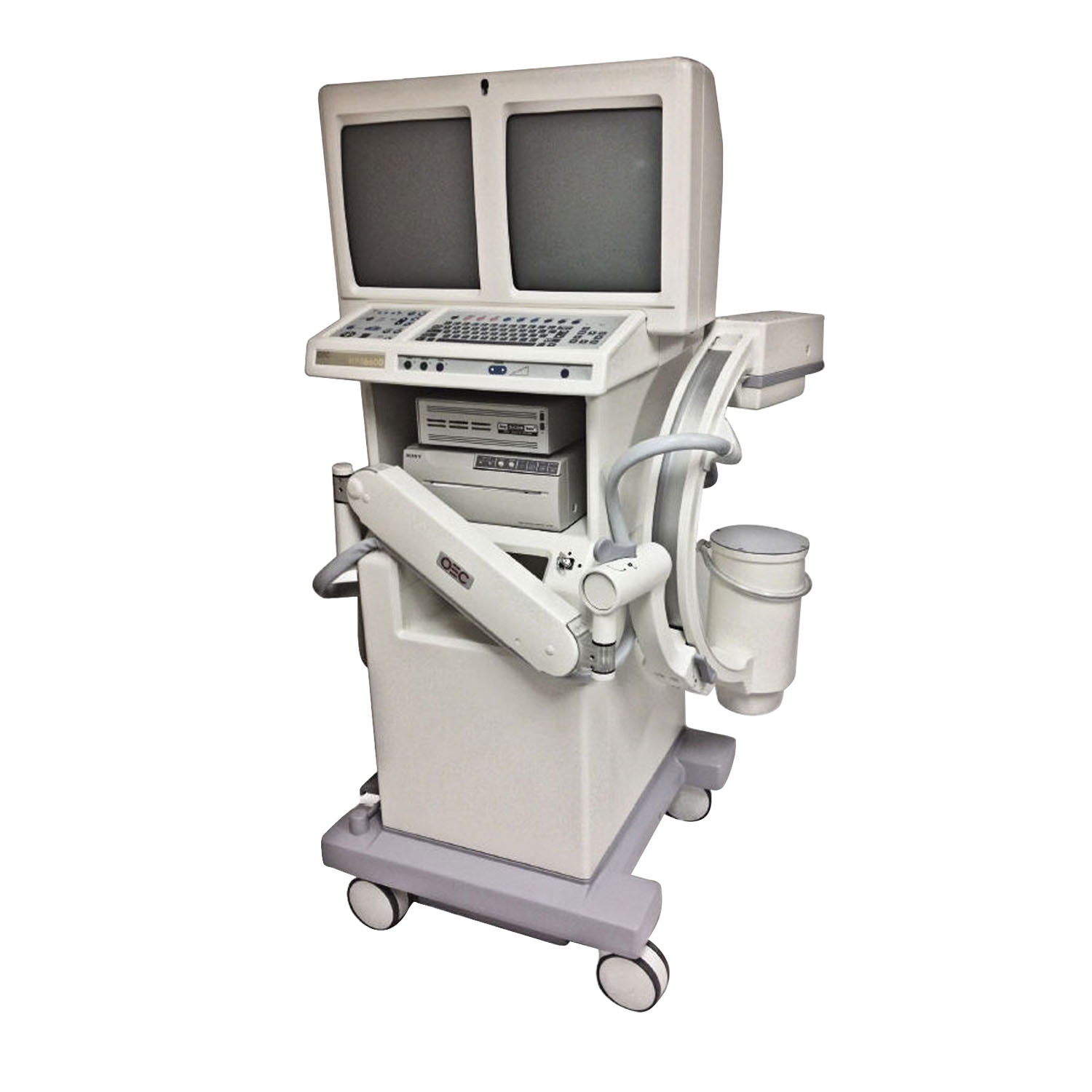Popular Brands
- GE (Brands: OEC, OEC Elite)
- Philips (Brands: Pulsera)
- Fluoroscan (Brands: Insight)
- OrthoScan
- Siemens
- Ziehm
- Genoray
Types of C-Arm Machines and Special Considerations
- Fixed C-arm / Cath Lab: Fixed c-arm units, sometimes referred to as cath labs, deliver extremely detailed imaging with a high kW generator output. Fixed c-arm units offer clinicians the high power to complete advanced analysis for extended periods of time, making them ideal for angiography and cardiac studies.
- Mobile C-arm: Mobile c-arm units offer a cost-effective imaging alternative to traditional, fixed-place c-arm systems. The prevalence of mobile c-arms offers improved patient outcomes for a variety of procedures in almost any facility. Mobile c-arms provide enough imaging power for almost every clinical application, except for cases requiring high amounts of sustained imaging power.
- Mini C-arm: Like full-sized mobile c-arm units, mini c-arms offer facilities basic fluoroscopy functionality at a fraction of the cost of fixed, high-powered units. Mini c-arms are ideal for scanning hands, feet, ankles, wrists, and elbows, and are often designed with a smaller overall footprint. Mini c-arms can also usually be operated by the surgeon, making them an ideal option for small spaces.
- X-ray Image Intensifier: An x-ray image intensifier, also known as an XRII, is usually found opposite of the X-ray tube of a traditional C-arm, it converts x-rays into visible light. X-ray intensifiers help to ensure low doses during imaging procedures, because they help to intensify even low-density x-rays.
- Flat Panel Detector: A flat panel detector, also known as an FPD, is the digital alternative to industry-standard x-ray image intensifiers. A relatively new feature to the C-arm market, flat panel detectors directly convert x-rays into digital values. Based on quality techniques, flat panel detectors produce better image quality because they don’t reduce scale with the use of magnification in comparison to an XRII.
